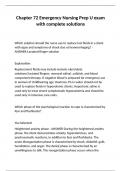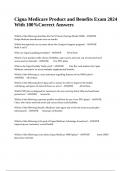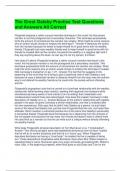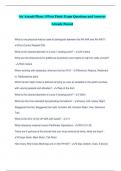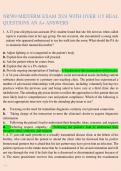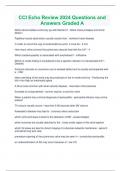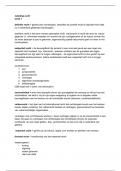Samenvatting
PGZ2024 Case summary (Disease and prevention module cases summary)
- Instelling
- Maastricht University (UM)
This document is an indepth summary of all answers to learning goals of all cases in the PGZ2024 module (disease and prevention). It saves you the time of reading the whole literature as it includes all what you need to understand for passing the exam. Good luck!
[Meer zien]





